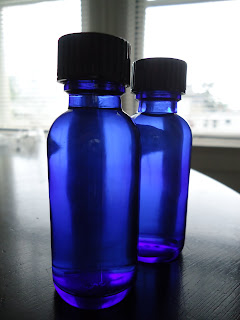These days, roses are best known as an ornamental garden plant, or as a gift between lovers. But in years past, roses were much more than a young man’s means of wooing a pretty lady. Roses were once used for medicine, decoration, beauty products, and even food.
One easy way to make use of your roses is to make rose water, using a simple distillation method. You won’t need any special equipment to do this, and chances are you have everything you need already.
Homemade Rose Water
Ingredients:
Handful of rose petals
3 Quarts filtered water or rain water
Ice or frozen cold packs*
Equipment:
Large Pot with rounded lid
Large Rock with a flat top or a large, heavy glass bowl*
Small glass bowl
Process:
1. Thoroughly wash the rock and place it into the pot.
2. Scatter the rose petals around the rock.
3. Pour the water into the pot.4. Place the small glass bowl onto the rock. Place the lid onto the pot upside down.
5. Heat on high until the water boils; reduce heat to a simmer.
6. Place the cold packs or ice into the inverted lid. Simmer for 20 to 30 minutes, replacing the cold packs with ones fresh from the freezer if necessary.
*Rose water notes
Ice or Cold Packs: I prefer to use cold packs, since the melting ice can be a bit messy.
Large Rock or Glass Bowl: I decided that I liked the rock better. When I tried to use a bowl, it would always start to float when I added the water. So, unless you’ve got a very heavy bowl, the rock will stay put better.




Why do you use a rock? or a bowl for that matter in with the water and petals? And why the cold packs? I've made rose water before (love it!) but never did it this way... Perhaps I am missing something. Would you mind explaining for me :)
ReplyDeleteHi Blossom, great questions! The rock (or bowl) is just used as a platform to keep the smaller bowl placed on top out of the water. The cold packs make the lid cold, which allows more condensation to form on the lid. This condensation then drips into the small bowl. Basically, this is a simple steam distillation method. Rose oil evaporates with the steam, and this is a simple way to catch it. Hope I explained that alright, but if not, here's wikipedia's explanation of steam distillation: http://en.wikipedia.org/wiki/Steam_distillation
ReplyDeleteP.S. I would love to know how you make your rose water :)
Oh, I made mine perhaps the 'wrong' way :) Not entirely sure since I didn't look up how to do it in the first place lol. I boiled distilled water and poured it over a jar full of rose petals. I left it until it was cool then strained the water into a jar.
ReplyDeleteYour explanation was perfect, thank you :)
This is a very clever way to catch all the rose essence that is in the condensation. I've noticed that when I make herbal tea too, that the steam carries awaw a lot of the smell/flavor. I have a book on herbs by Rosemary Gladstar, and she said to always put a lid over tea as it steeps so the good stuff won't get away! Thanks for the how-to, I will definitely be trying it!
ReplyDeletethankfully found this post when i needed rose water for a recipe. learning how to make it was the best part (or, actually, the ONLY good part) or the recipe i used it for. we've got a massive rose bush, i'll definitely make more and use it in some of the ways you suggested in your other post. thanks so much!
ReplyDeleteYou are welcome, I'm so glad that my post was able to help you! :)
ReplyDeletehi, is it wrong to just put the rose petals in distilled water?? or is this way more effective??
ReplyDeleteDo you mean as an infusion? There is nothing wrong with making a rose infusion. The method I used is more to capture the essential oils evaporating in the steam, which should give you a more pure and concentrated rose water. When making an infusion, it will be a bit more dilute and not quite as pure because the essential oils will evaporate with the steam. But a rose infusion is still a useful item to make.
DeleteHello! I was wondering what the shelf life is? How should it be stored?
ReplyDeleteRose water can be stored in the refrigerator for up to two weeks, or for longer term storage, it can be frozen.
Deleteok. so the rock is to hold the bowl which fills up with water? how many ice packs do you think I will need? where do you get ice packs? can I use a stainless steel pot? thank you want to make this weekend
ReplyDelete